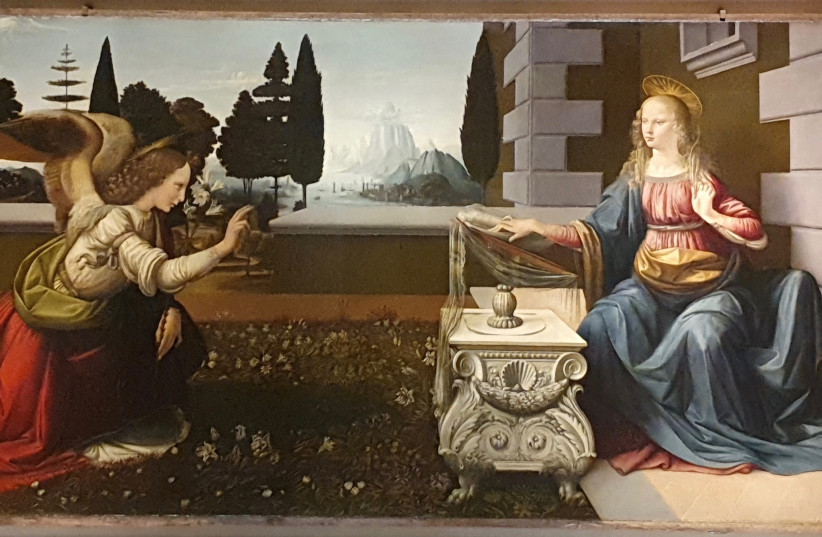During his lifetime, some 500 years ago, Leonardo da Vinci was known as the pioneer of modern anatomy and a painting genius. But there is something clearly wrong with his masterpiece The Virgin of the Rocks.
The painting, of which he painted two versions, shows the “holy family” as they fled from Bethlehem after King Herod ordered the massacre of the innocents, meeting John the Baptist on the road to Egypt. According to researchers at Tel Aviv University (TAU), Meir Medical Center in Kfar Saba and the Bezalel Academy of Arts and Design, however, there is something wrong with the piece.
The unusual findings regarding the issue were published in the latest edition of the Israel Medical Association Journal. The research was authored by Dr. Bruce Wolach of Meir’s pediatrics department and TAU’s leukocyte functions lab and Zvi Lenzer of Bezalel. They wrote about their unusual findings in the latest issue, in a piece entitled “Leonardo da Vinci’s quest to decipher the essence of nature, man, art and science: The Tale of Virgin of the Rocks.”
“The intersection of art and science, particularly medicine, has challenged us for years,” they wrote. “Throughout our medical careers as clinicians and investigators, we constantly looked for common expressions of art and science, questioning how one influences the other… Science contributed enormously to the development of techniques of artists.”
Leonardo was a self-taught expert in the natural sciences, geology, anatomy, architecture, mathematics, engineering, optics, physics and military engineering, and he studied the proportions of the human body exhaustively. But the authors want to know how could he paint The Virgin of the Rocks with anatomical errors, failing to display his vast knowledge of anatomy in the painting?
He painted two versions, the first of which was completed between 1483-1484 and is exhibited in the Louvre in Paris. The second was painted between 1506-1508 and is today on display in London’s National Gallery.
Where can the anatomical errors be seen most clearly?
The scene is not an evocation of the Immaculate Conception but a medieval story of the “holy family,” as the Madonna sits in front of a barren cave with the infant Jesus while John prays.
The rocky grotto is in a shadowy wilderness, a place of seclusion and refuge. The baby has golden hair, and the environment is wintergreen with rivers, lakes and dramatic rock formations, completing a dream-like atmosphere, the researchers wrote. In the second painting, the figures have halos over their heads, and other religious attributes are on display.
“Perhaps the church demanded that Leonardo add them,” the authors suggested.
However, the researchers chose to focus on the fact that the ratio of baby Jesus’s body and head are wrong, with the head of a one-year-old baby but an enlarged body suited to a child of three to five years. Mary’s right hand is misshapen and too long, and her arm is positioned in an abnormal way; her pose seems artificial.
Only one of [Da Vinci’s] paintings, The Annunciation, was reported in the art literature as having perspective and anatomical imperfections. Art experts attributed them to Leonardo’s inexperience,” the researchers wrote.
“Restoration techniques of works of art often involve irreversible changes of the original material, and Leonardo’s masterpiece underwent several high-quality restorations, but there were no distortions of the original images,” they added, as well as discussing whether the errors could have been intentional.
Why did he make such anatomical errors? While their research was inconclusive, they said they “believe that even 500 years ago, Leonardo was so far ahead of times and did not feel compelled to exactly follow reality, letting his imagination and creativity run free. [He] was dedicated to the values he believed in. Few artists and scientific personalities exert such constant fascination.”

